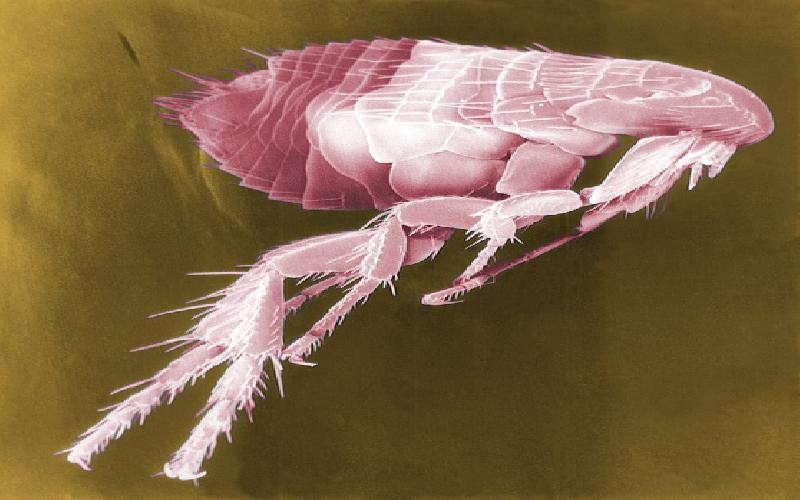Understanding The Life Cycle of Flea


To understand the fleas life cycle you must know all the stages of its life. From egg to adult the flea will go through many changes.
The fleas life cycle consists of eggs, larvae, pupae, and the adult flea. If you attack 2 - 3 of these at the same time and do it consistently for 3 months it will be difficult for the flea to survive. The flea has many assets that help him to survive through these stages.
This is the beginning of the cycle, the egg can take from two days and up to two weeks to hatch depending on the environmental conditions. They are white, legless, and small like a grain of sand, They are not sticky and usually fall off and populate the ares where your pet sleeps.
A single adult female can lay four to eight at a time and up to forty a day. The egg can be fifty percent of the houses population.
Cold climates with humidity under forty five percent can kill eggs rapidly.
The second stage is the larvae which lasts four to eighteen days. They are white and can be up to a quarter inch long (most smaller). They avoid the light and live by eating the pre digested blood from adult fleas and other particles like dead skin, feces, feathers,and dead insects. With favorable conditions they will spin a cocoon in five to twenty days and enter into the pupae stage.
This stage accounts for maybe ten percent of the homes population. The pupae can stay in this cocoon for months before exiting as an adult when the conditions are right. This cocoon is sticky on the outside which helps them to stay fixed in the carpeting during vacuuming and protects them from chemicals. A flea in this stage will hatch faster in warmer and high humidity climates.
The adult flea will not emerge from this cocoon until a host is present. They can tell by body heat, carbon dioxide build up, or by vibrations. They will start to search for food after emerging from the cocoon and will feed just seconds after landing on a host. The adult flea needs to have a blood meal in order to lay eggs, they increase their odds by emerging near a host and it insures it's chances to reproduce.
The adult flea in very flat with three sets of legs, the flatness helps them to remain on the host while the first two sets of legs enable it to move quickly on the host.
The adult flea in known for its jumping and powerful hind legs, but it will remain still until it senses a food source. They can jump up to thirteen inches high or approximately two hundred times their body length.
The fleas saliva contains a softening agent to make penetrating easier, it is this agent that causes allergies and irritations.
Most fleas life cycles last from two weeks to several months with some cat and dog fleas lasting up to a year in ideal situations. Because of these different stages in the fleas life cycle, it makes it hard to eradicate them from your home. They have to be attacked with a plan that will disrupt this lifecycle for a period of time until they are gone.
BrotherPete
1
reply 0nbillett
1
reply 1viewgreen
1
reply 0